|
|


 |
|
|
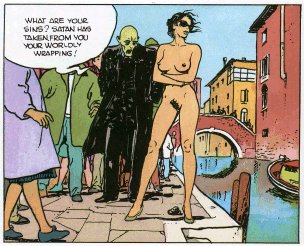 |
Milo Manara is Italian, which may explain why Venice crops up more than once in his oeuvre. His work is pretty pornographic, on the whole, but his ability to conjure up a certain sort of pseudo-Helmut Newton full-on female allure with a pen is not to be sneered at. The colour panel is from a graphic novel called Hidden Camera, the black and white ones are from Perchance to dream. 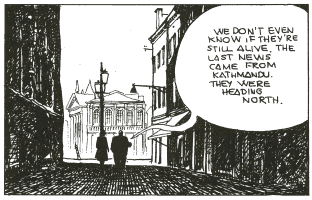 |
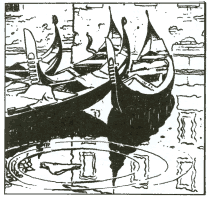 |
|
|
|
|||
|
Though not Venetian-born, as is
often reported, Hugo Pratt did spend his childhood in Venice. His Jewish grandmother took him on trips into
the Venice Ghetto, and from these visits he retained a fascination with Jewish
symbols, and the whole Eastern influx/trading hub thing, which all play a part
in Fable of Venice featuring his hero Corto Maltese. This is much more
the classic adventure - with far more Venice and far less pubes - than
the Manara tales above. Pratt died in 1995. He is commemorated by having a
public library named after him on the lido, housed in what was his home. |
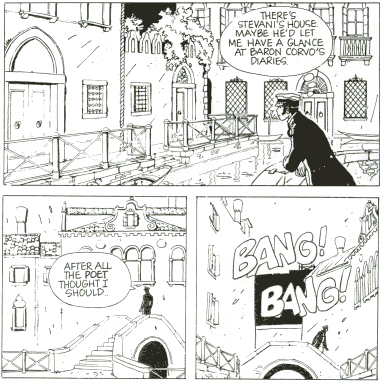 |
||
|
|
|||
|
|
|||
|
|
 In the 1990s there were lots of those shiny post-X-Men team-ups with their impossibly long legs and very big chests. Some of the largest chests belonged to Scott Lobdell's Wildcats, or Wildc.a.t.s as they were also known. In 1999 they took their covert ops mayhem to a somewhat generic Venice, arriving by scuba naturally. Later the baddies roll out a tank, and how did they get that into Venice? 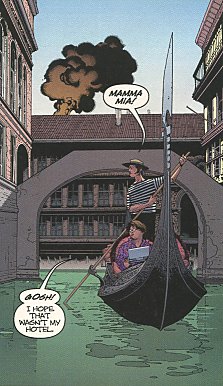 |
||

The Bureau for Paranormal Research and Defense (B.P.R.D.) are a
post-Buffy team - created by Mike Mignola, the man responsible for Hellboy
- out to combat supernatural nastiness wherever it surfaces. So when Venice's canals start getting
extra foul and stinky they're called in. From a graphic novel
called The Soul of Venice and other stories.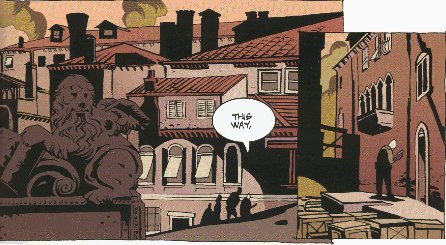 |
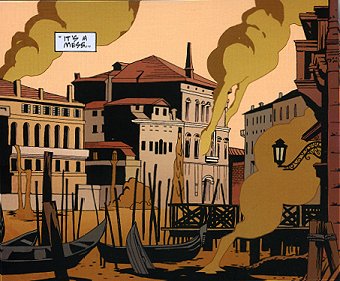 |

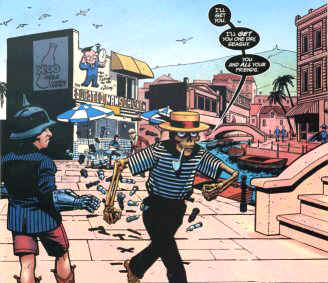
|
Seaguy, written by Grant Morrison and drawn by Cameron Stewart,
came out in 2004. In issue #1 our hero and his pal Chubby, a
free-floating cigar-chewing
tuna,
get into a spat with Death, dressed as a gondolier, over a game of chess. 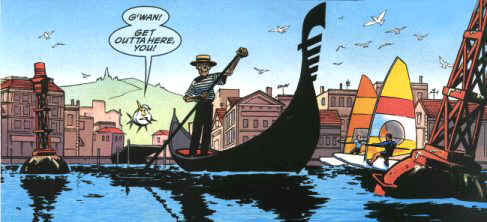 |

Well, this was more than a
bit disappointing. Having seen some scans of Les Voyages d'Anna by
Emmanuel Lepage on another
website I decided to give it a go despite it being in French, so
appealing were the drawings. My disappointment was caused by the above
fine site's scans turning out to have been nearly all of the finished
Venetian content. The story's voyage takes our heroine away from and back
to Venice, so there's much much less interesting stuff in the middle. And the
artist chooses to provide us with pages of sketches for the finished
art, which is either an aesthetically interesting choice or a case of
getting the most pages out of the least work, according to your point of
view.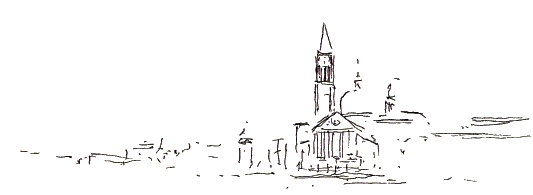 |
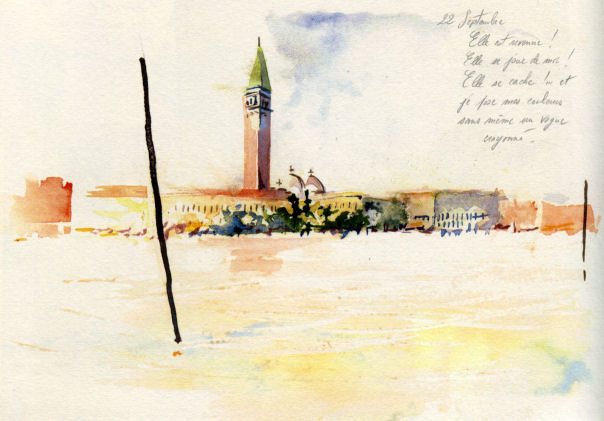 |
|
|
|
||
|
|
||
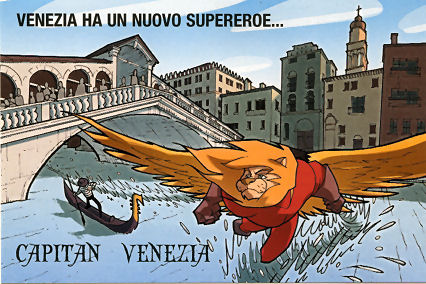
|
||

|
|
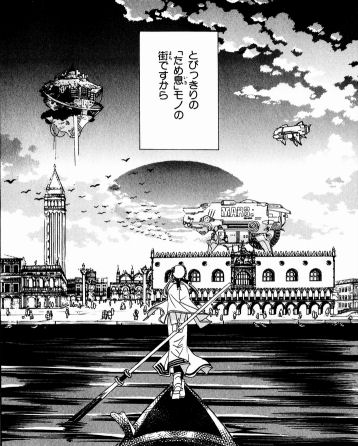 |

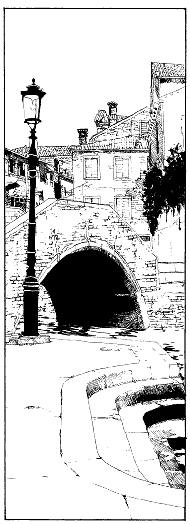 |
This is
another Japanese
manga - one which I spotted in a (closed) bookshop's window in Venice. Forget-me-not by Kenji Tsuruta
features a heroine who is a
private detective working in Venice. This one is a bit more for grown-ups
than Aria, with more nudity. The Venetian locations are authentic,
though, and amazingly mostly recognisable.
|

Les Suites VÚnitiennes is a series by Eric Warnauts and Raives which comes in 9 volumes, in French. It's set in Venice in the 18th century, where it appears it rained the whole time. It seems (to this man with his rusty French) to be a spooky and sexy globe-spanning tale of murder and masks, and to take great pains to get Venice right. The locations are authentic and the attention to contemporary details, like the fašade of the church of La PietÓ being unfinished, and the Piazza still containing the (later demolished) church of San Geminiano (see below) is impressive. . 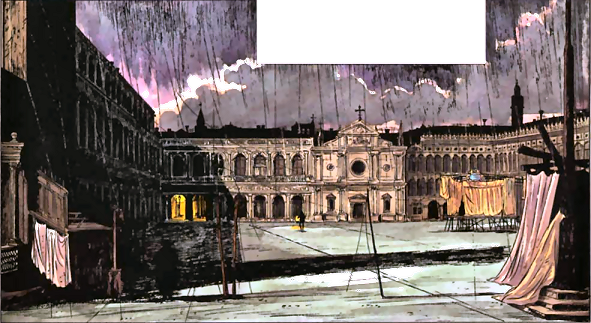 |
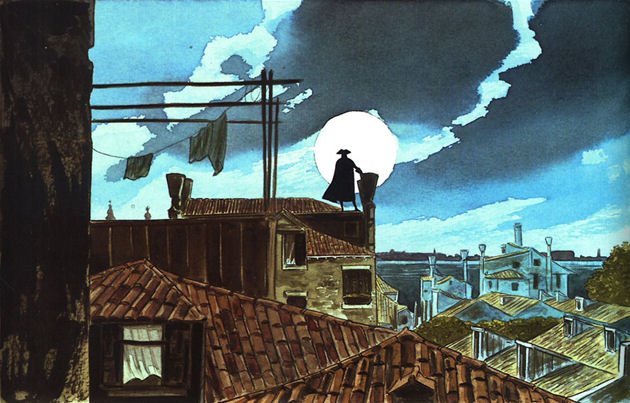 |
|
|
|
||

This comic book is called
See Venice... and it's the fifth in the Largo Winch series by Philippe Francq and Jean Van Hamme to be translated from the original French. Six
have been translated so far, out of a total of eighteen. The heroes of
French bandes dessinees have a tendency to stupid names (Dylan
Dog!) but Mr Winch at least has the excuse of being born Largo Winczlav.
He was made the head of a business empire when his father was murdered and
so is doomed to spend his time defending this empire from sundry threats
and men with big guns. In See Venice... he does this in New York,
Paris and Venice, with the help of several gorgeous women wearing scanty
clothing. These women tend to get pushed and knocked around a lot, so
you'd think that they might learn to wear more practical clothing, but
being slapped around in dungarees is not so picturesque, maybe. I wasn't
entirely smitten by the plotting, the slapping, or the 70s haircuts. Our
hero, who looks like a bloke off of a 1970s Mills & Boon cover, is a bit Bruce
Wayne and a lot James Bond, but without too much wit. The Venice scenes
look generically, but authentically, Venetian without being anywhere
identifiable, except San Zanipolo and San Marco, where the villains land a
helicopter in order to attack and abduct our heroines. The small print on
the back of the title page informs us that 'With the authors' consent and
in order not to upset our more sensitive readers, certain illustrations
have been modified...' This is intriguing, of course, but as there's as
much blood and violence as one could wish for I can only assume that
naughty nipples have been covered over*. 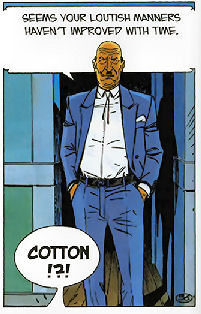 See Venice... only contains half the story, as it
concludes in the second volume, unsurprisingly titled ...And Die,
which features a visit to San Michele, the cemetery island, including the
characteristically tortuously wordy frame far right. Oh, and the arch
villain's name is...well, see right. No relation. See Venice... only contains half the story, as it
concludes in the second volume, unsurprisingly titled ...And Die,
which features a visit to San Michele, the cemetery island, including the
characteristically tortuously wordy frame far right. Oh, and the arch
villain's name is...well, see right. No relation.*Update How right I was - two nipples have been covered by a sheet, one by a closer-fastened blouse, one sideboob has been removed and four statues' breasts are covered, two with sheets and two with their hair. Male nipples were not affected, although one male statue gets a fig leaf. Exhaustive research, eh? |
|
|
|
|
||
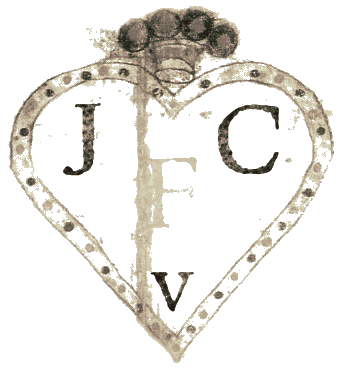
|
|
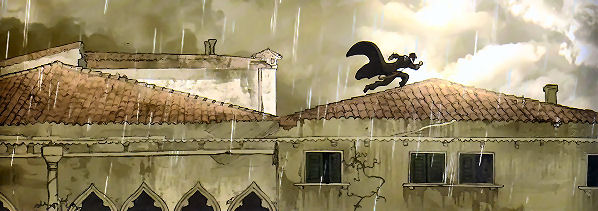 A well-named series, Gore consists mostly of messy disembowelments of large-chested female zombie/demon types. Also, just after a gondolier is eaten by a shark, there's a demon mermaid, who also gets disembowelled, or should that be filleted? Our hero, the disembowler, looses his busty female companion in the ensuing ruckus, but later teams up with her sister, who has also inherited the family chest, as it were. Not sure my stomach's up to a full reading of this series (of 4) so I'll just provide you with some images, chosen for their prettiness and lack of floating body parts, although the page of images of a chopped-off foot serenely floating down a canal has a certain...OK, maybe not, but it does produce a newspaper headline Female Calf in a Canal. Polpaccia di donna being the Italian for female calf, it seems. A production of GG Studio. |
|
|



| Die Perle des Ewigen
Lebens - Band 1 - Der Weisse Drache Which translates as The Pearl of Eternal Life - Volume 1 - The White Dragon, by Eric Puech. I can't confidently say what's going on, my German being what it is, and what it is being non-existent. We seem to have a large-chested female ninja coming to Venice to...well, beat people up, it looks like, and get wet whilst wearing naught but a net curtain. It all looks very Venetian, without looking like anywhere in particular, but there are cats. 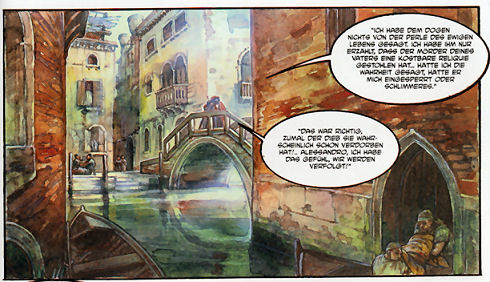 |
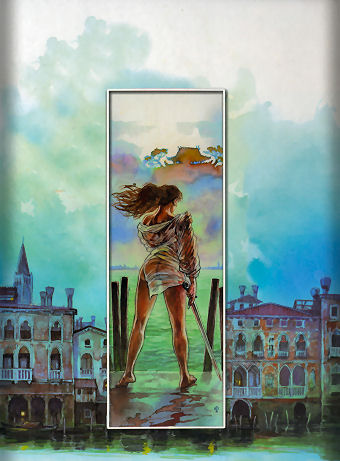 |
|
|
|
||
Louis
La Guigne is a series written by Frank Giroud
and Jean-Paul Dethorey. It's known as Louis Lerouge in German, but has
been translated into English not at all, it seems. The fifth book begins in Venice.
I could only get access to
the German version. The artwork is
handsome and stone-coloured and this looks like a comic I might like to
read. It's all very Venetian (and authentic-looking) for the first 17 or
so pages, and then flies off elsewhere in Italy, with Mussolini putting in
an appearance getting attacked by a seaplane in Rome. 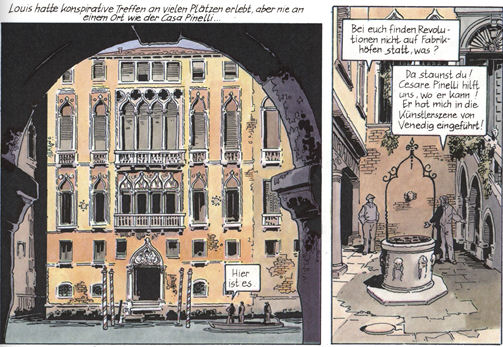 |
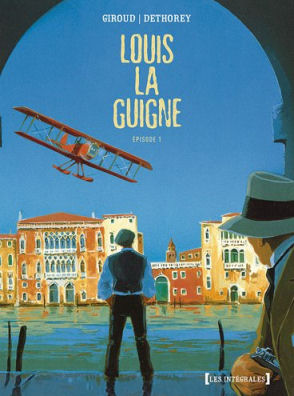 |
|
|
|
||
|
|
||
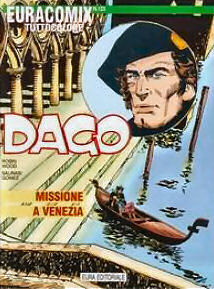 Dago is the somewhat unfortunately- named series devoted to Cesare Renzi, a Venetian nobleman of the 16th century. (He's called Dago after his dagger, evidently.) After being betrayed by a friend he takes to the galleys and travels the world, sticking his oar in during various historical events. So he starts out in Venice in Lo Schiavo di Venezia, but later volumes take him all over the globe, although he seems to return occasionally, in person and in dreams. The comics are the work of Paraguayan writer Robin Wood and Argentine artist Alberto Salinas for an Italian magazine, but they are published in Spanish-speaking countries too. |
||